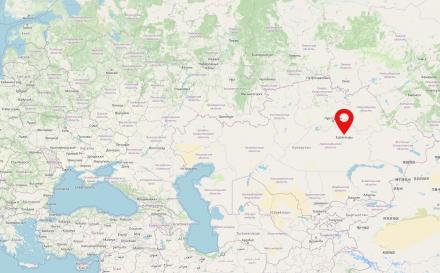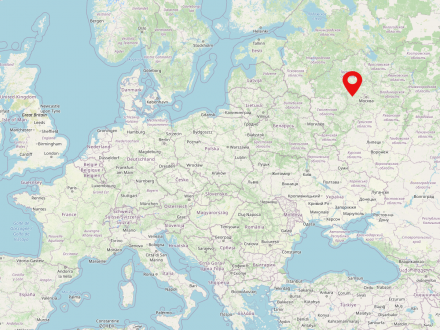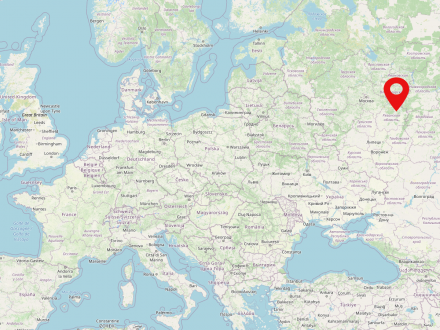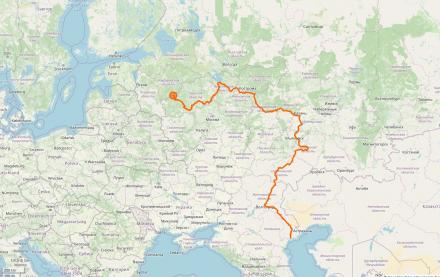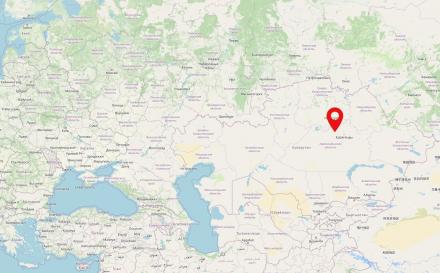Qaraghandy is the fifth largest city in Kazakhstan and an important transportation and economic center in the northeast of the country.
The Russian Federation is the largest territorial state in the world and is inhabited by about 145 million people. The capital and largest city is Moscow, with about 11.5 million inhabitants, followed by St. Petersburg with more than 5.3 million inhabitants. The majority of the population lives in the European part of Russia, which is much more densely populated than the Asian part.
Since 1992, the Russian Federation has been the successor state to the Russian Soviet Republic (Russian Socialist Federative Soviet Republic, RSFSR), by far the largest constituent state of the former Soviet Union. It is also the legal successor of the Soviet Union in the sense of international law.
The Russian Empire (also Russian Empire or Empire of Russia) was a state that existed from 1721 to 1917 in Eastern Europe, Central Asia and North America. The country was the largest contiguous empire in modern history in the mid-19th century. It was dissolved after the February Revolution in 1917. The state was regarded as autocratically ruled and was inhabited by about 181 million people.
The Ural Mountains extend more than 2,500 kilometers in a north-south direction between the East European and Siberian land plains. It has been defined as the border between Europe and Asia since the 18th century.
The map shows North Asia, the Ural Mountains are highlighted. CIA World Factbook, edited by Veliath (2006), Ulamm (2008) and Copernico (2022). CC0 1.0.


_
At the end of the 19th century, many hearts beat faster when they heard names like Brazil, United States or Canada – names that sounded like music to the ears. Many Russian Germans, who had drunk in the stories of their forefathers’ intrepid and adventurous resettlements with their mother’s milk, understood these terms as a kind of fateful summons. In their naïve hearts there lived an enduring hope for a happiness that awaited them behind the mountains and beyond the oceans.2
The Soviet Union (SU or USSR, Russian: Союз Советских Социалистических Республик, СССР) was a state in Eastern Europe, Central and Northern Asia existing from 1922 to 1991. The USSR was inhabited by about 290 million people and formed the largest territorial state in the world, with about 22.5 million square km. The Soviet Union was a socialist soviet republic with a one-party system.
The Volga River originates about 300 km northeast of Moscow in the Waldai Heights, a plateau in the European part of Russia. It is 3530 km long. At Astrakhan, the Volga fans out into the various arms of the Volga Delta and finally flows into the Caspian Sea.
Kazakhstan today is a landlocked Central Asian country located between Russia, China, Kyrgyzstan, Uzbekistan and Turkmenistan. In the past, the region was ruled by various steppe peoples until the Kazakhs subordinated themselves to the Russian Tsarist Empire in several steps between 1731 and 1742. From 1936, Kazakhstan was part of the Soviet Union as the Kazakh SSR; since its disintegration in 1991, Kazakhstan has been independent.
Siberia covers an area of 12.8 million square kilometers between the Urals, the Pacific Ocean, the North Polar Sea, China and Mongolia.The Russian conquest of Siberia began in 1581/82. At the time of the Enlightenment mainly a source of raw materials and space for trade with Asia, Siberia gained importance from the 19th century as a place for penal colonies and exiles. With the development of the Trans-Siberian Railway and steam navigation at the end of the 19th century, industrialization and thus new settlers came to Siberia. Further industrialization under Stalin was implemented primarily with the labor of Gulag prisoners and prisoners of war.
The map shows North Asia, centrally located Siberia. CIA World Factbook, edited by Veliath (2006) and Ulamm (2008). CC0 1.0.
Poland is a state in Central Eastern Europe and is home to approximately 38 million people. The country is the sixth largest member state of the European Union. The capital and biggest city of Poland is Warsaw. Poland is made up of 16 voivodships. The largest river in the country is the Vistula (Polish: Wisła).


The Soviet Union (SU or USSR, Russian: Союз Советских Социалистических Республик, СССР) was a state in Eastern Europe, Central and Northern Asia existing from 1922 to 1991. The USSR was inhabited by about 290 million people and formed the largest territorial state in the world, with about 22.5 million square km. The Soviet Union was a socialist soviet republic with a one-party system.


